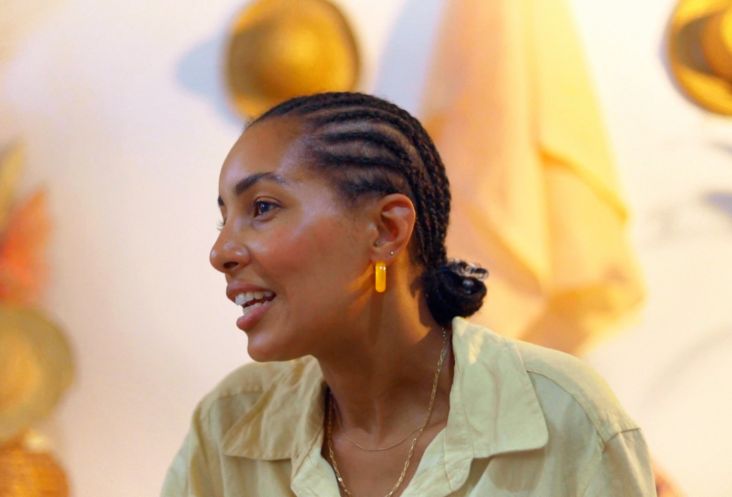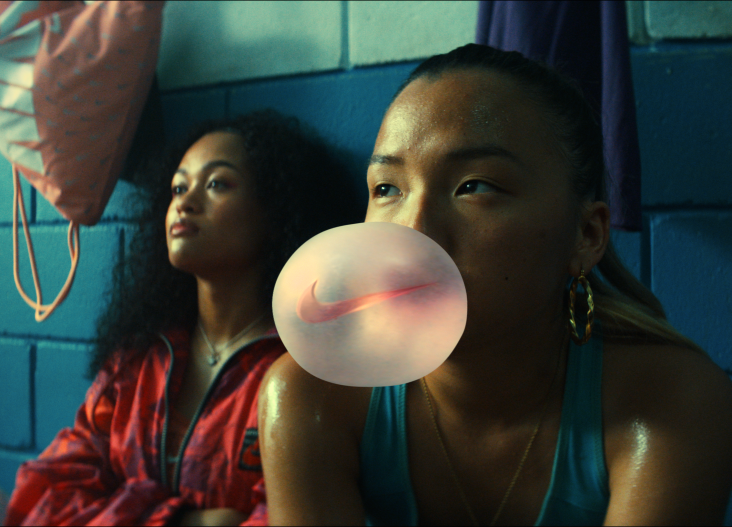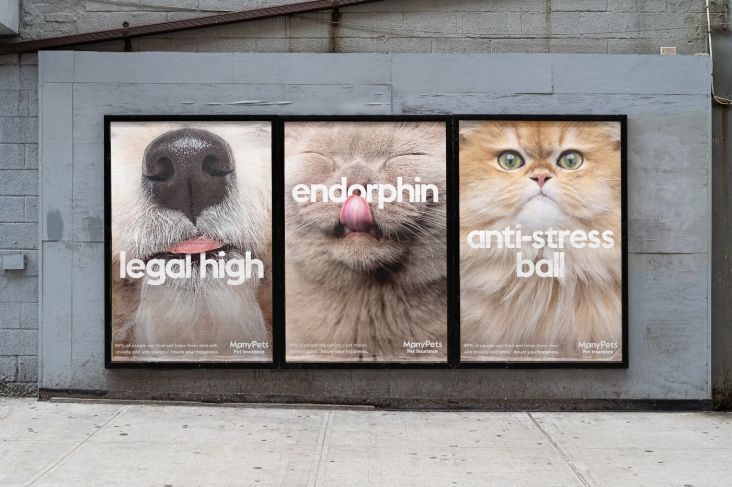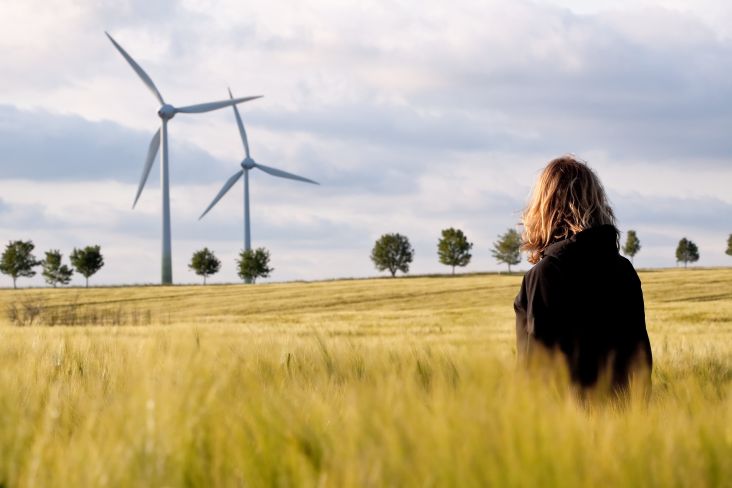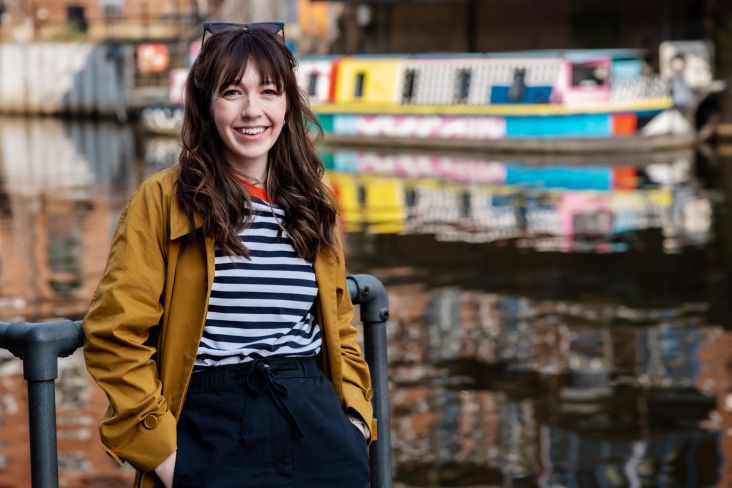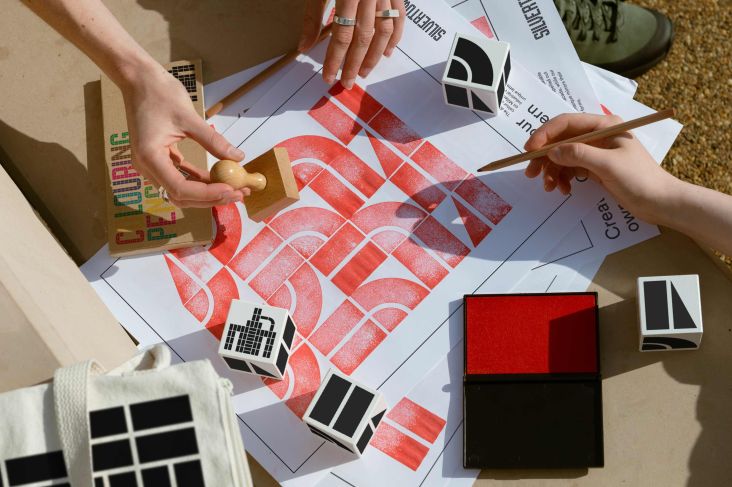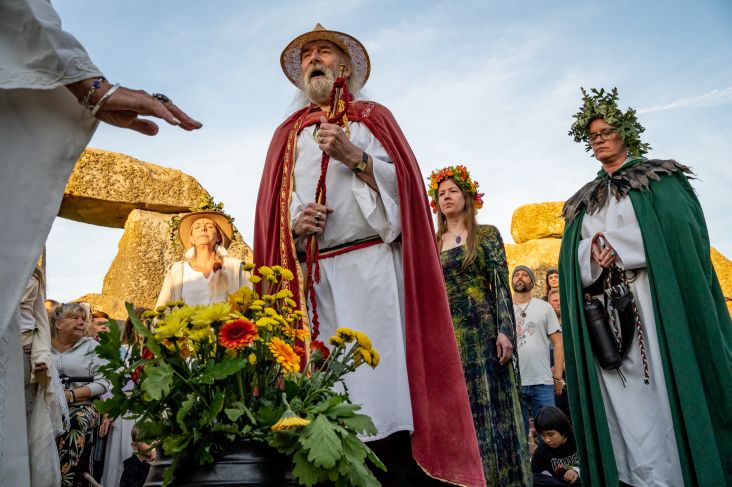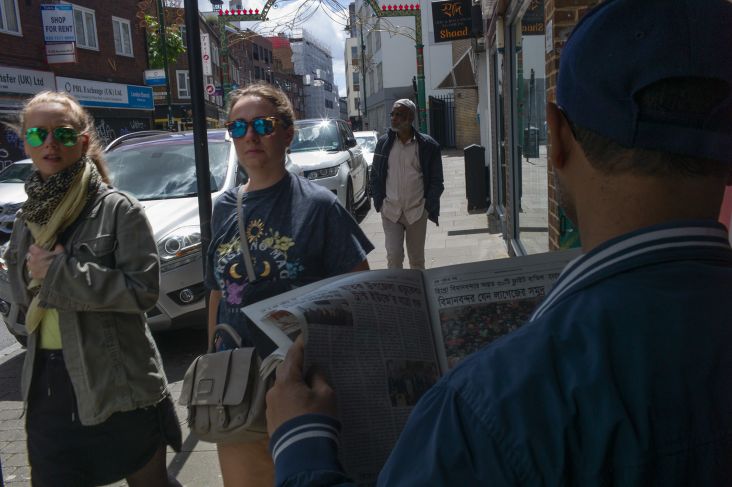Freshpaint on deconstructing consciousness, mixing paint with AI, and why Tezos NFTs deserve the spotlight
Jeffrey Seaberg, who goes by Freshpaint online, has been an artist and educator for over ten years and currently teaches in Hong Kong. He creates striking portraits that explore the layers of human consciousness, often combining traditional methods with AI generative art to make something completely new.
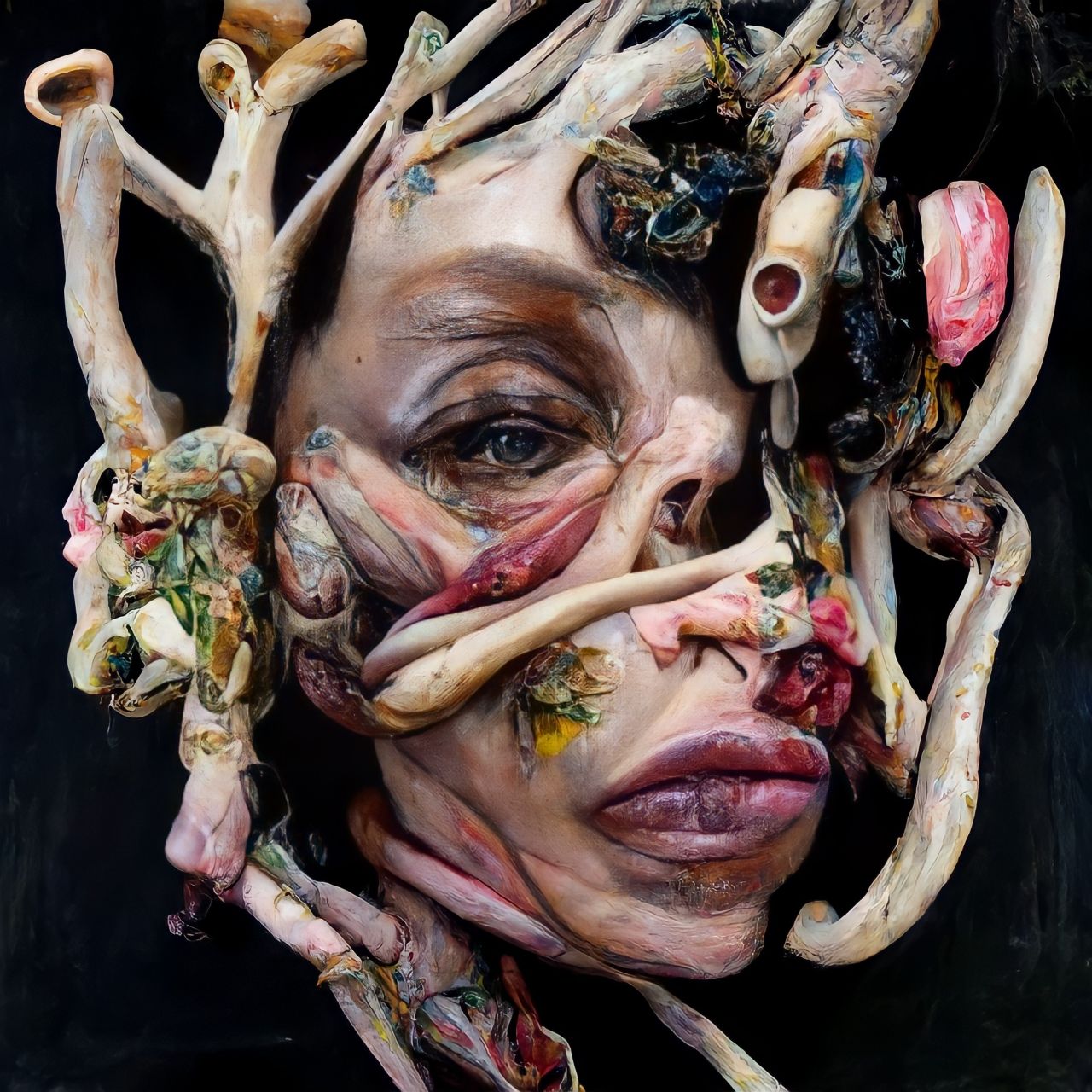
Part of the series, Mutations © Freshpaint
Freshpaint sells his art as NFTs on Tezos, a carbon-neutral, proof-of-stake blockchain. Tezos is known for its experimental community of artists creating everything from traditional oil paintings to generative AI music. The low cost of transaction fees and sustainability of Tezos has cultivated an alternative crowd of creators and collectors, using sites like Objkt and Teia to buy, sell, and trade NFTs.
Throughout his career, the idea of fragmented reality has always been present, long before he switched to using digital methods in his work. We got the chance to pick his brain about his feelings about AI (spoiler: scary and cool at the same time. Check out our piece on DALL-E AI art), NFTs, being an art teacher, how he explores consciousness in his work and more.
Your work seems to be a combination of traditional and digital methods. Have you always utilised digital tools to create art, or is this a new method for you?
Working digitally is relatively new for me. I trained initially as a painter, and there's something about the tactile connection to working with physical materials that interests me very much. I have a lot of experience with design software, but I've only recently started working extensively with procreate for digital painting. That, along with AI, has opened up many new possibilities for me with my work, and I feel like I'm just beginning to tap into them.
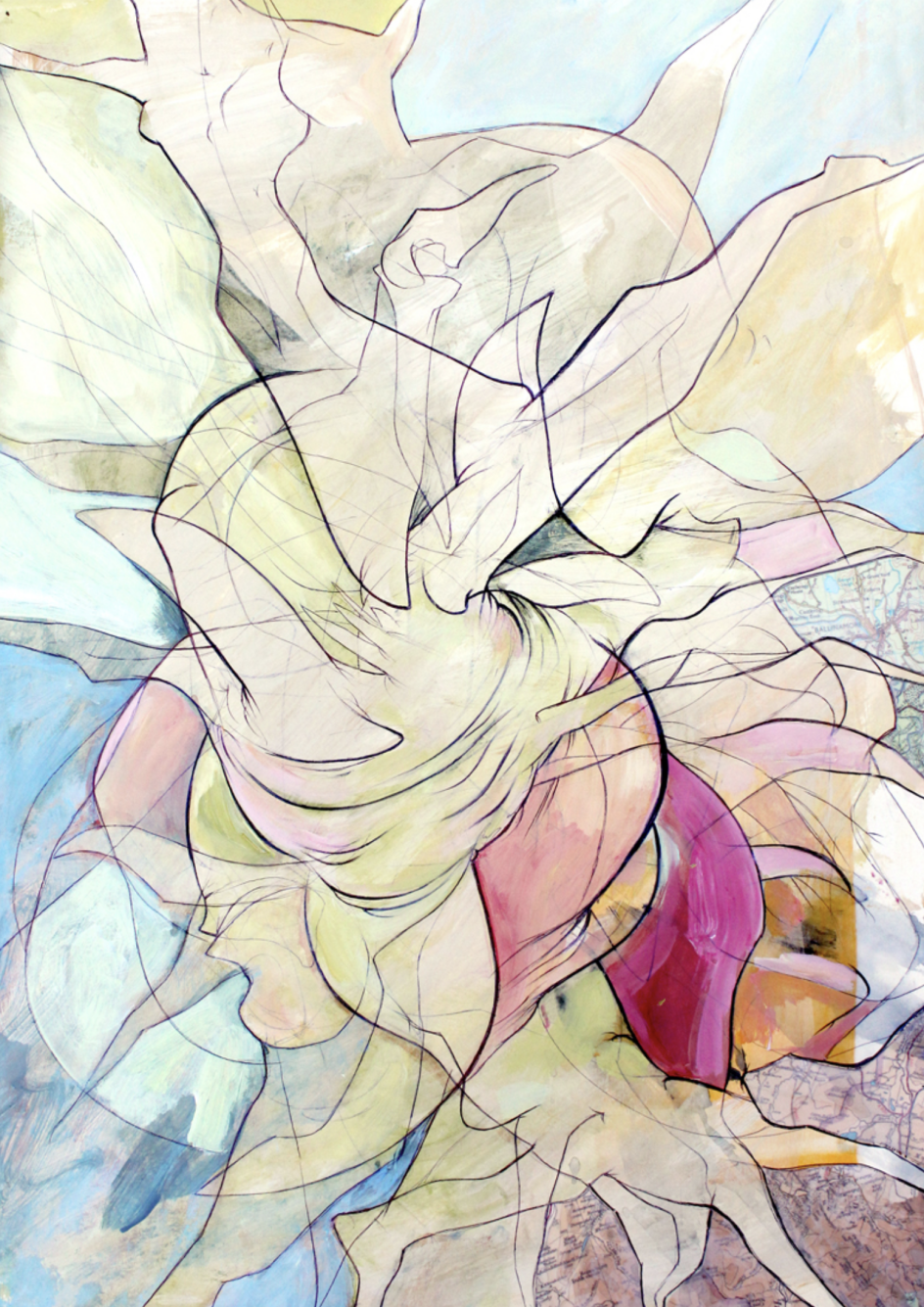
Divergence © Freshpaint
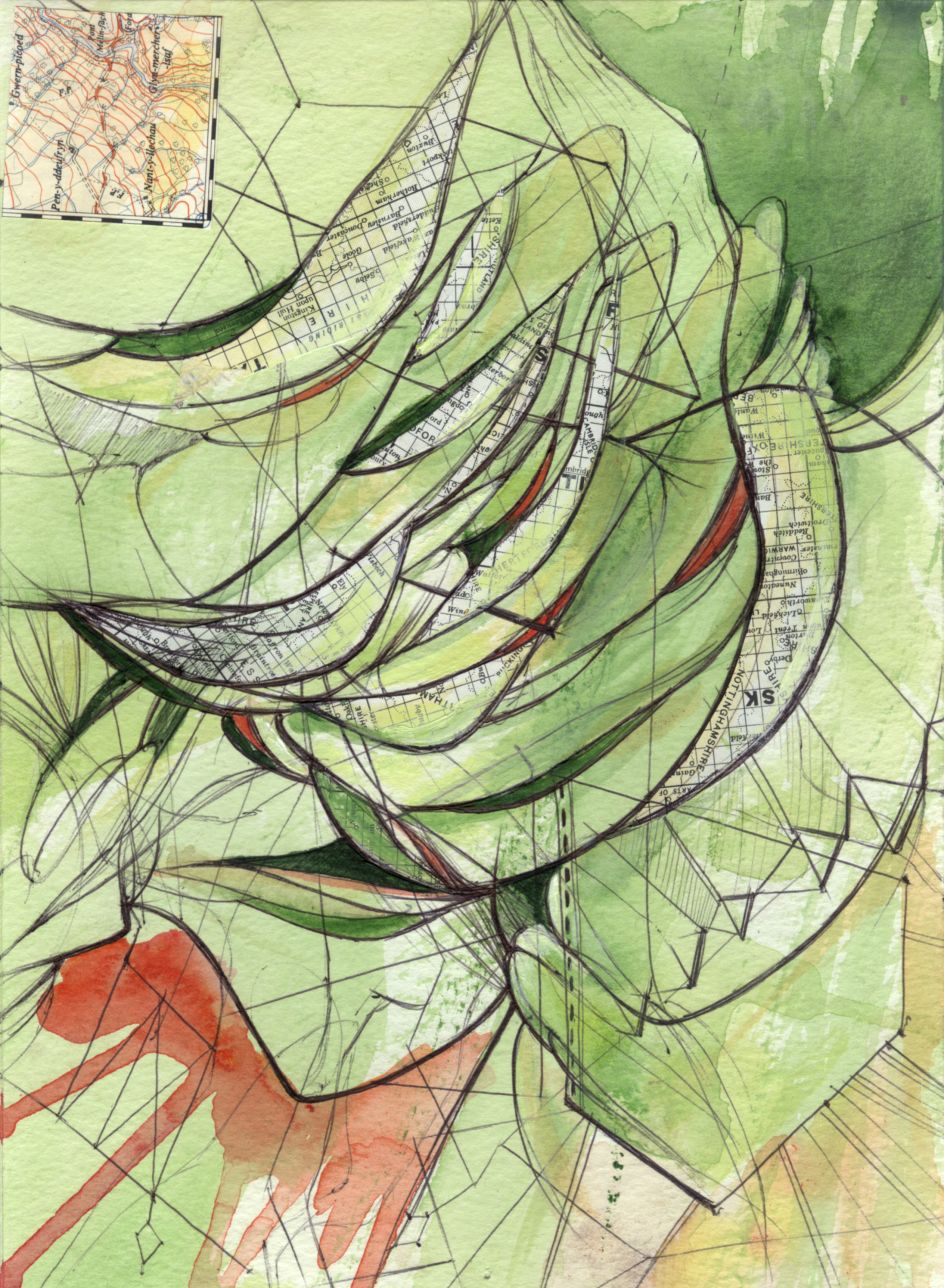
Hypergraph IV © Freshpaint
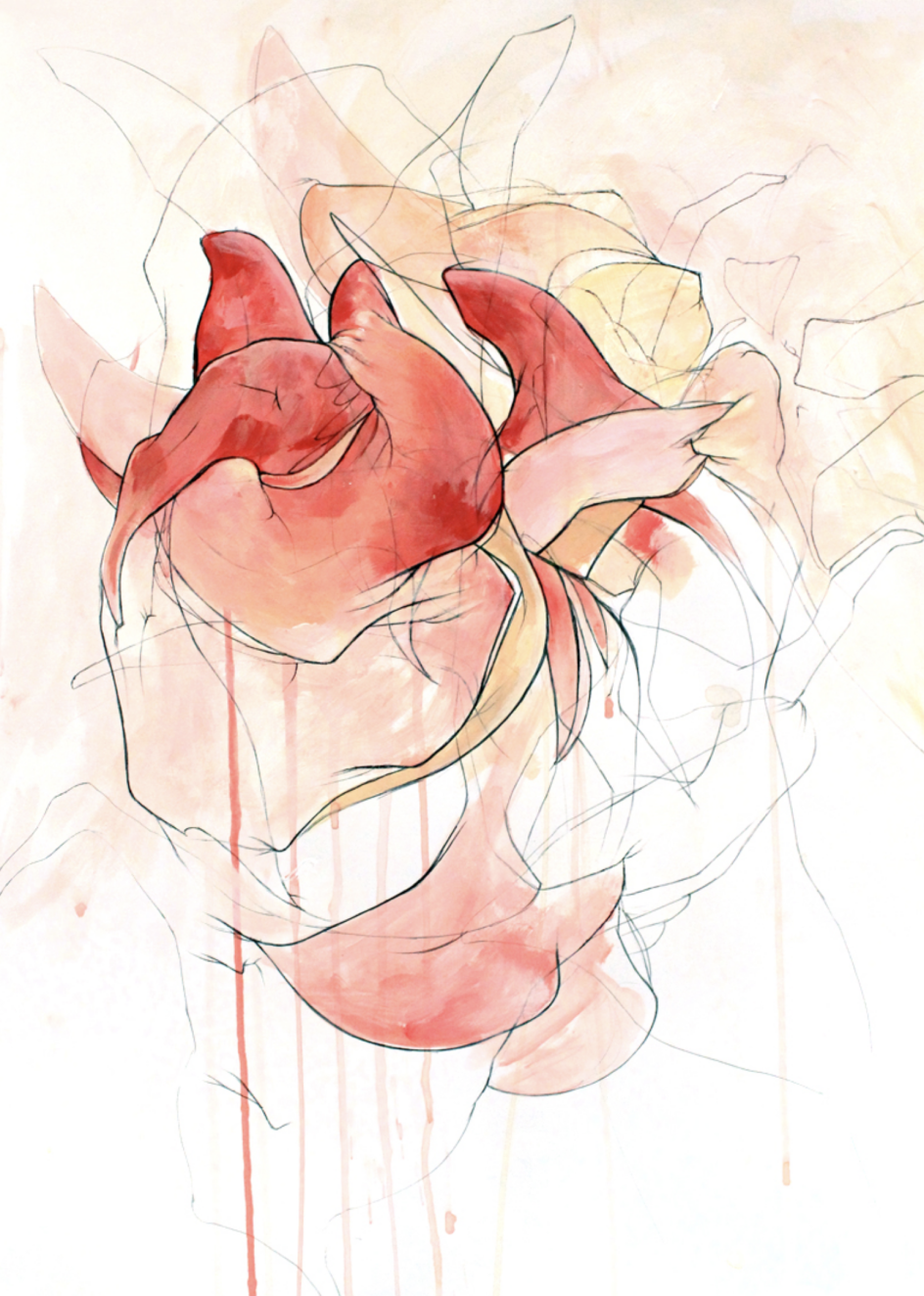
Statis © Freshpaint
Your work is an exploration of consciousness and the mind. You focus mainly on fractionalised portraits in your work. How do these two elements play together?
I've worked with abstraction and organic/anatomical forms for many years. I've started incorporating more detailed and realistic aspects of portraiture only in the last few months. The NFT space has undoubtedly been motivational for me as it has pushed me to work much more and at a much higher level than I was previously.
Painting has always been a way for me to explore and attempt to understand consciousness and the big questions of how it is that we're here. I'm fascinated by the things we can't fully understand about ourselves and the universe we exist within. I'm drawn to visualising these things that are invisible and intangible. Deconstructive processes allow me to take apart the human form and put it back together again. It's a futile attempt to understand something which I'll never be able to grasp fully, but I can't entirely stop myself from trying.
There's also the contrast between beauty and the grotesque, which I keep returning to. These constructed portraits can be a bit shocking and repulsive. But I think they're also quite beautiful at the same time. This is a good metaphor for the human experience, which I see as simultaneously destructive and full of beauty and wonder.
Deconstructive processes allow me to take apart the human form and put it back together again. It's a futile attempt to understand something which I'll never be able to grasp fully, but I can't entirely stop myself from trying.
As a fellow artist, I know it can take a while to reach the light bulb moment of finding your style, medium, and expression to convey your vision. Did you have that ah-ha moment as an artist?
I think having breakthroughs is a big (and gratifying) part of the creative process. Most recently, I would say it has to be the inclusion of fragmented and detailed facial features in my first digital paintings (Howl, Veritas, Relic, etc.) These works felt like significant breakthroughs for me where things just started to click. Previously, I had always thought of my abstract and figurative works as separate bodies of work. It's really exciting now seeing these two areas collide together.
How does AI play a role in your artwork? How has that changed in the past decade of your career as an artist?
I've only just started working with AI, so I feel like I'm really at the beginning in terms of how it fits with my own creative process. To be honest, I have mixed feelings about using it, as the process feels almost too simple.
You produce a series of text prompts, engaging in a 'dialogue' with the AI to guide it to what you're looking for. It's a back and forth, and it takes some time to get a sense of how you can steer it, but once you have that, the power of what it can do is incredible.
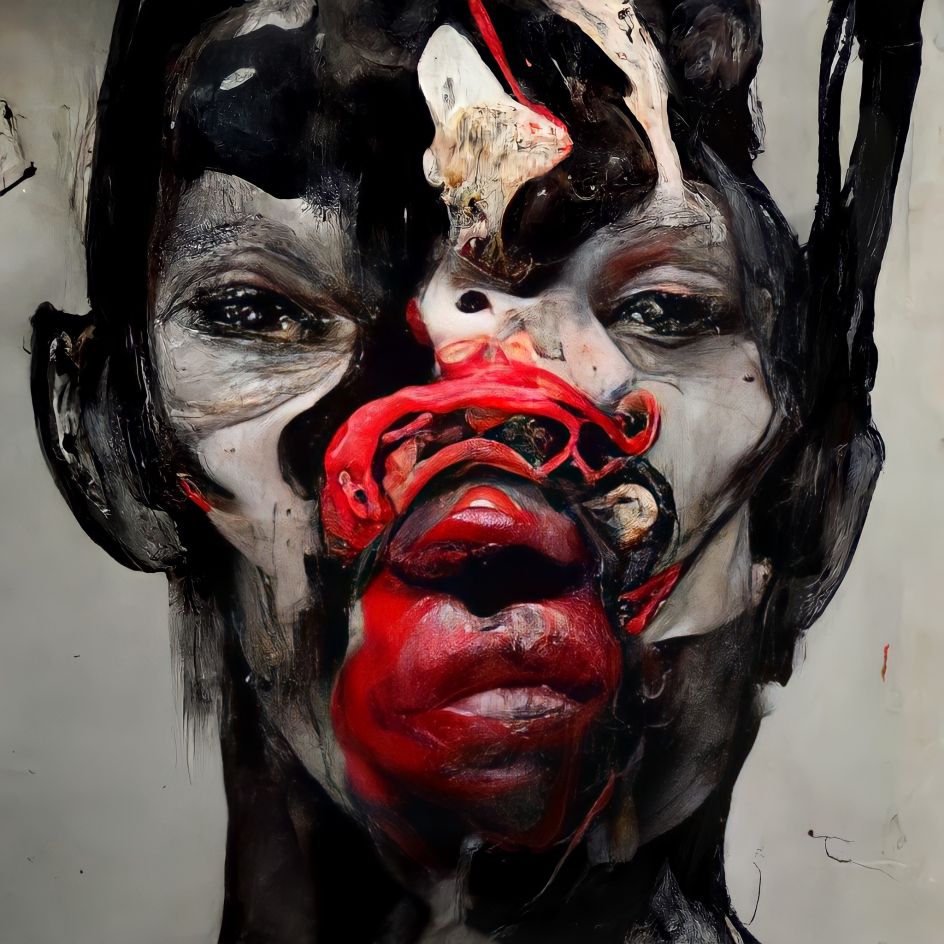
Part of the series, Mutations © Freshpaint
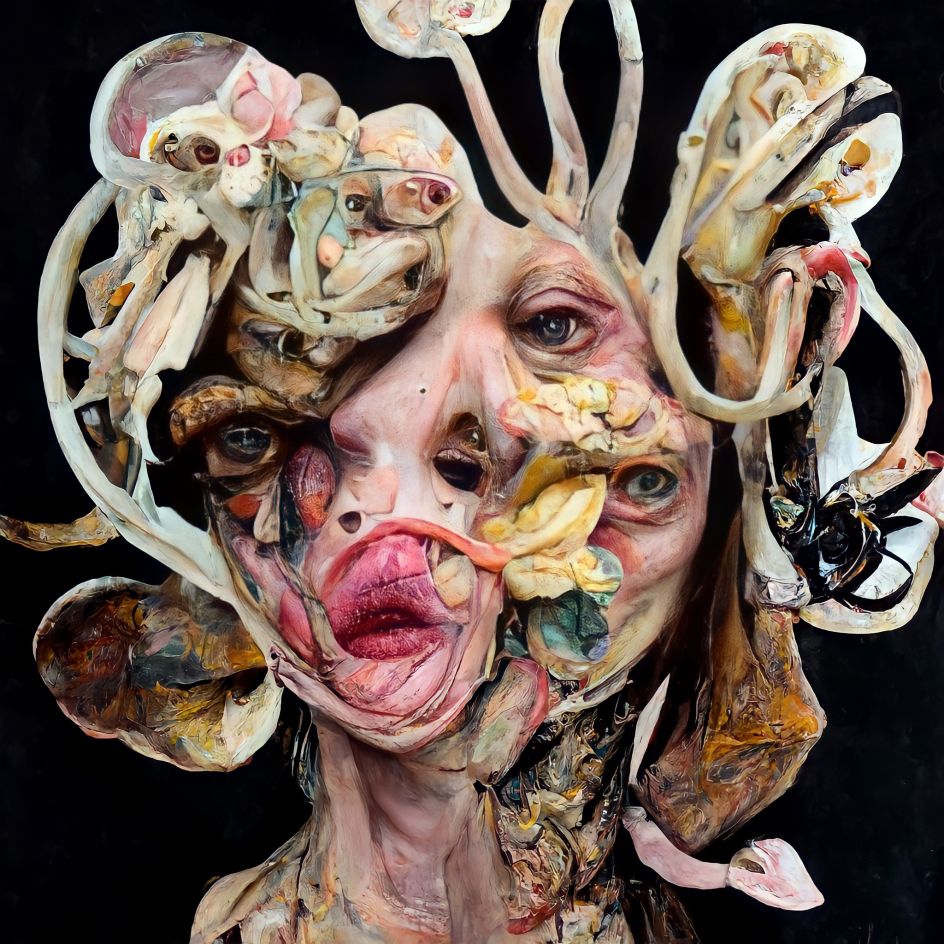
Part of the series, Mutations © Freshpaint
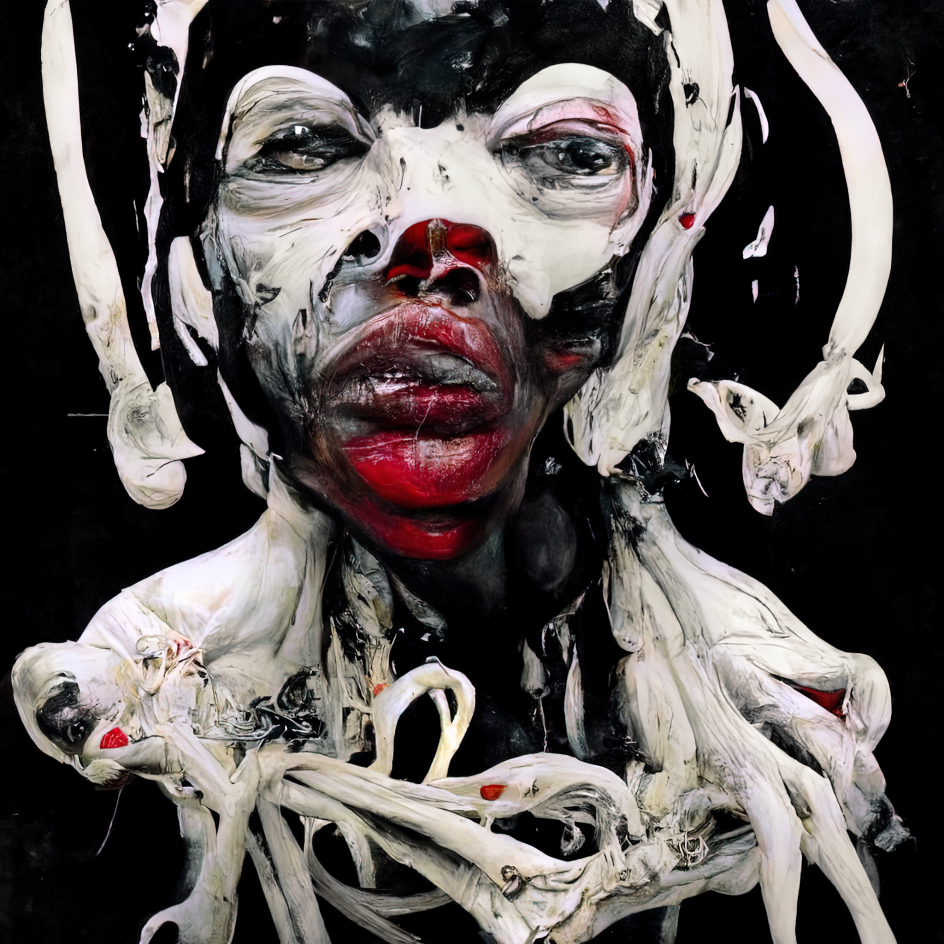
Part of the series, Mutations © Freshpaint
Often, it generates possibilities that you would never have thought of. I have mixed feelings about it because, coming from a background in traditional painting, I've spent countless hours working on physical paintings. Having the ability to quickly generate imagery in just about any style still feels kind of foreign and even a bit unsettling sometimes.
That said, I think the other side of that thought is that it's yet another (powerful) tool in the artistic toolkit of media, techniques, and processes. So far, I've been trying to use it to replicate, modify, and transform my existing work to maintain a connection to what I'm already doing. I'm also currently spending a lot of time thinking about and exploring how I can make AI come together with the physical and digital processes in novel and innovative ways.
In a way, it makes me think of the photographic process where a camera is just simply a tool, but the photographer is the 'brain' making decisions about which imagery to capture and present. In a way, working with AI is like that - there is an infinite amount of imagery that can be produced, but I think the artist has to be the one with the vision in making the decisions about what to show and why.
Having the ability to quickly generate imagery in just about any style still feels kind of foreign and even a bit unsettling sometimes.
I'd love to learn more about your process with your series Mutations. Can you tell us how you've accomplished such a visceral, unique take on portraits?
This series features some works with overpainting, collage layers, and digital manipulation, but it also has many works that are only slightly modified outputs from the AI.
What made you choose Tezos as the blockchain you minted most of your NFTs on?
I started out minting on Ethereum on Opensea last year before I discovered Tezos. There are a lot of different kinds of things going on in the space, and I think generally, there's not yet a huge amount of visibility on the incredible community of artists that exists here. To me, Tezos seems to have built an extremely diverse, talented, and supportive community of artists working across many types of media and processes. The kind of work being made on the chain and the community's support here really resonates with me.
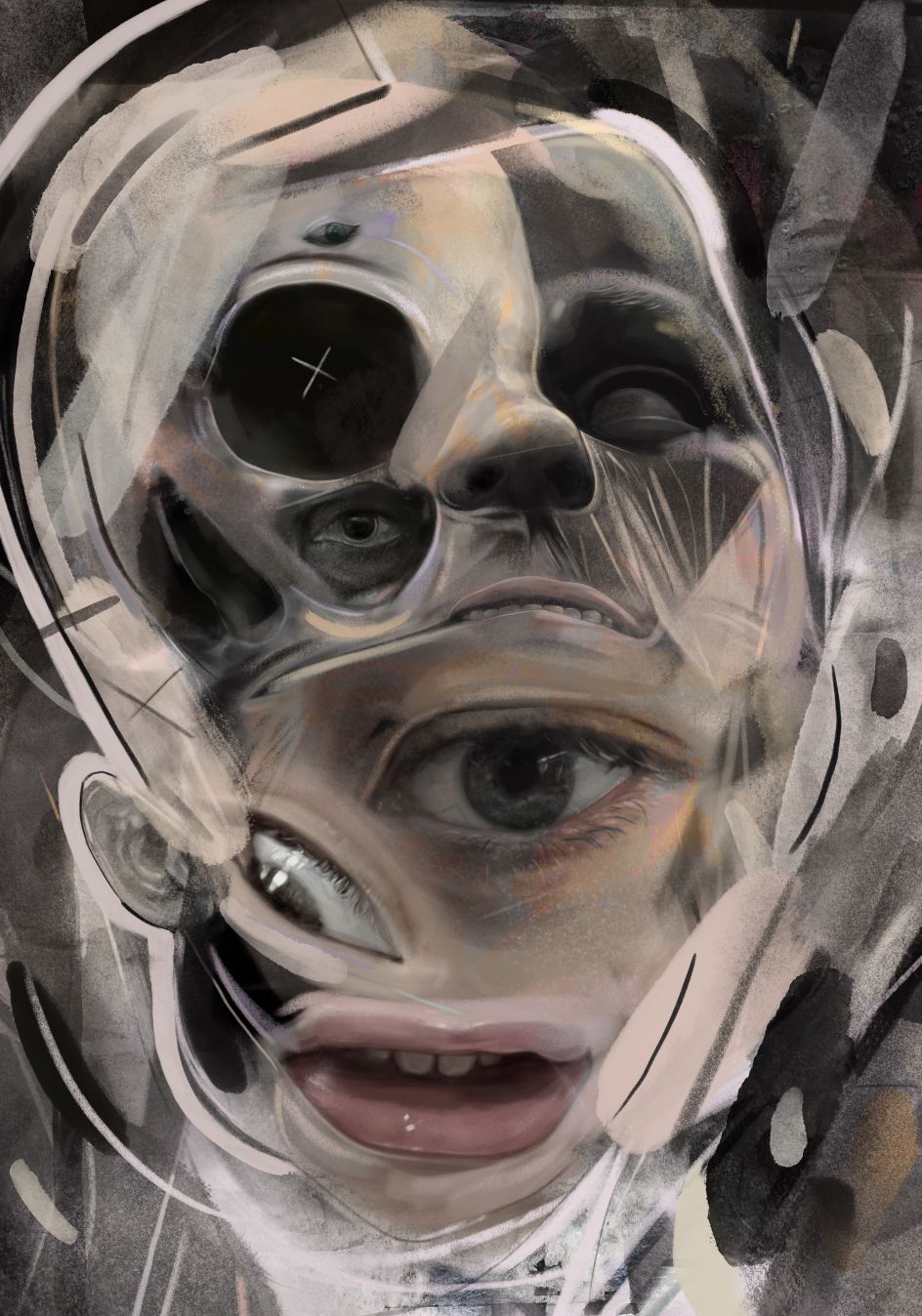
Relic © Freshpaint
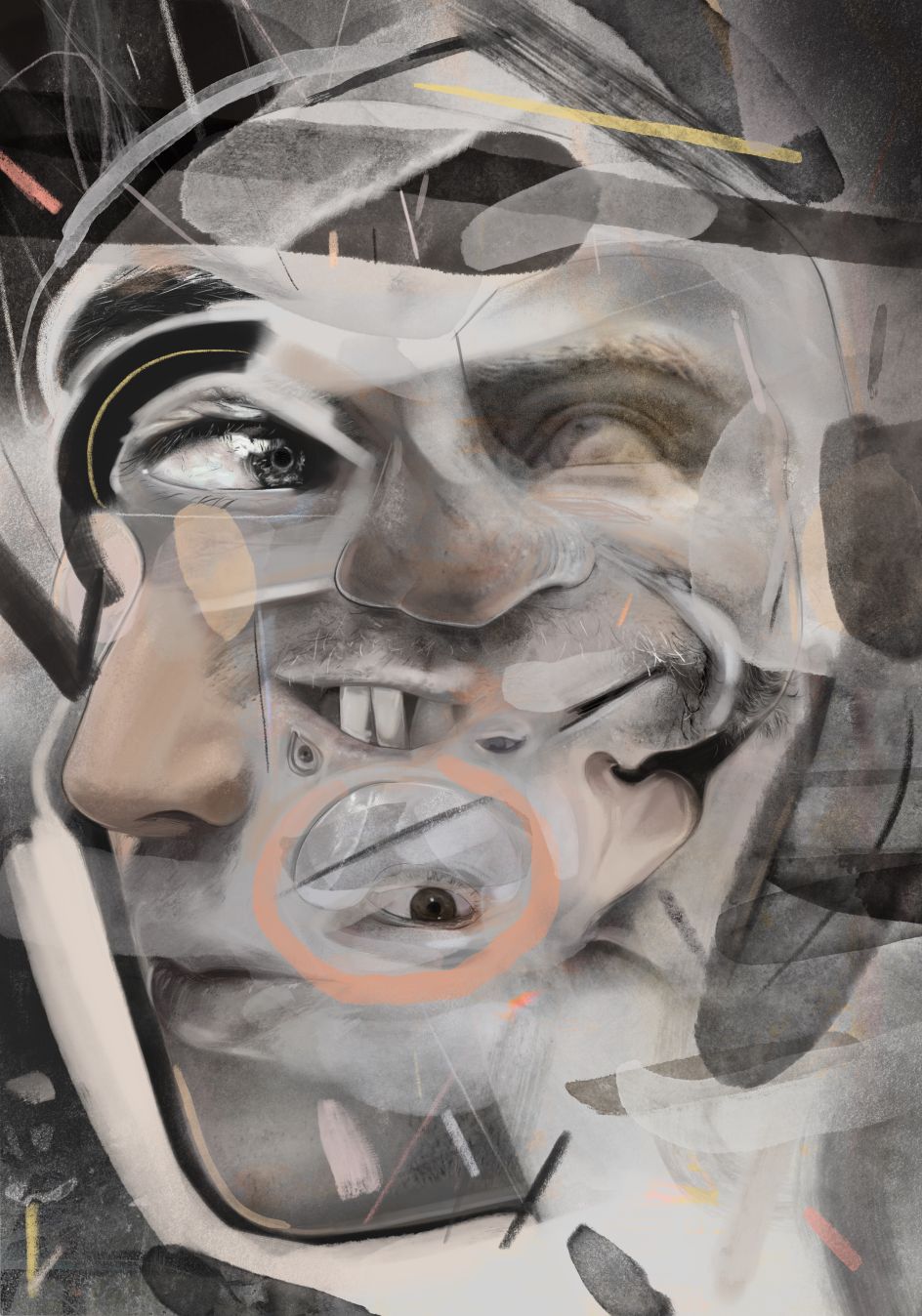
Veritas © Freshpaint
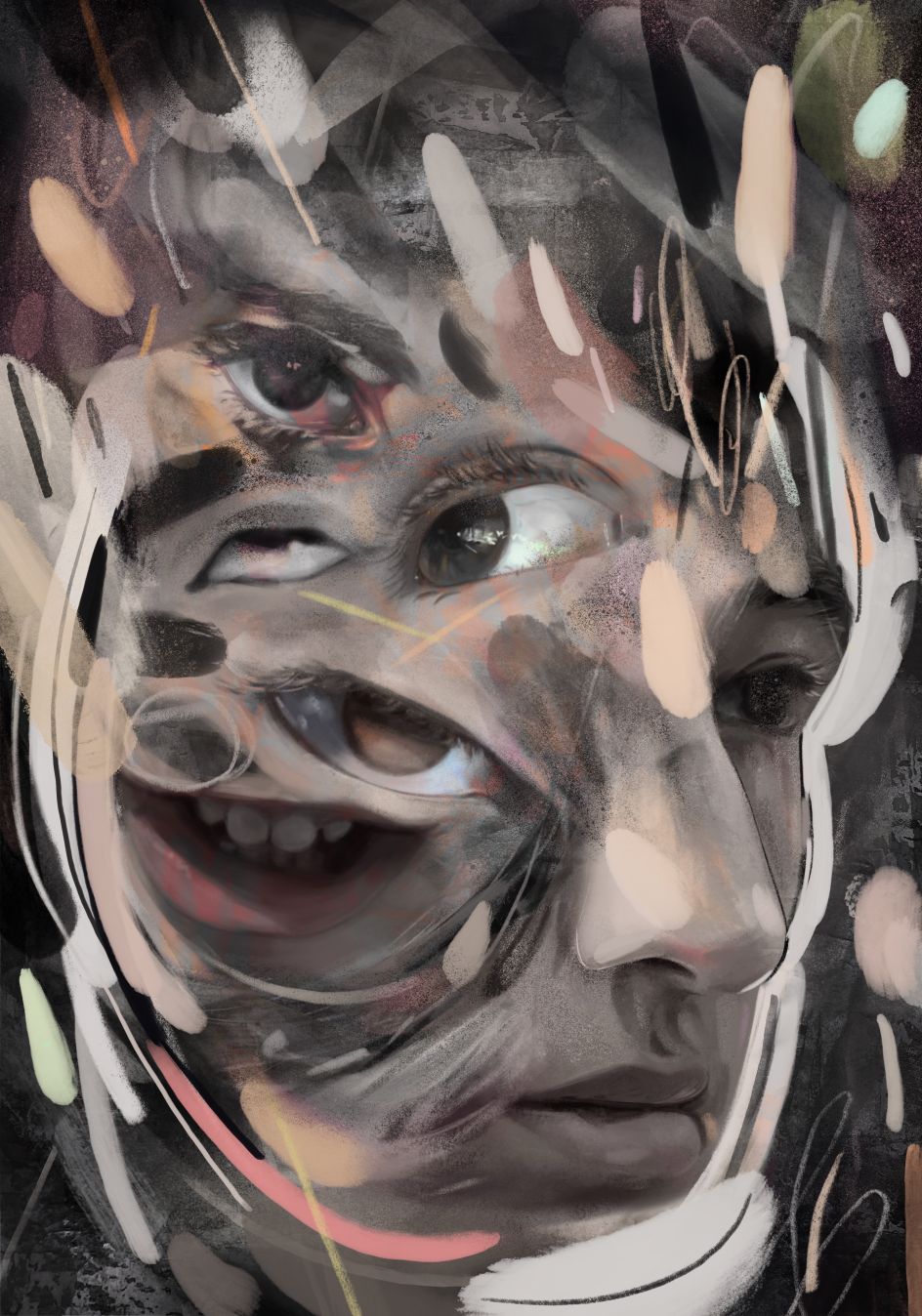
Oracle © Freshpaint
As an art educator, do you discuss NFTs or blockchain technology with your students?
I do, actually, and many are quite excited about it. I'm working on developing some student-led projects that we hope can help support local charities in Hong Kong. We started these last year, but the many switches back and forth from virtual school threw us off. I'm looking forward to seeing some student work enter the space when we return in the fall.
What are some of the major misconceptions you've heard about NFTs?
I've seen a lot of criticism of NFTs - equating them with Ponzi schemes and similar scams. To be honest, I don't disagree. There are a lot of risky and shady things happening which don't exactly bolster confidence in the space. At the same time, there's also a vibrant art community that is still relatively unknown to most people. Personally, I find myself extremely lucky to be a part of it. I can only go by what my own experience has been.
Finally, how did you get the name Freshpaint?
I didn't know what to use initially. I keep a collection of images of artists that I follow and like, which I call 'freshpaint'. I just decided to use it until I thought of something better. I never got around to changing it, and it just kind of stuck.




 by Tüpokompanii](https://www.creativeboom.com/upload/articles/58/58684538770fb5b428dc1882f7a732f153500153_732.jpg)


 using <a href="https://www.ohnotype.co/fonts/obviously" target="_blank">Obviously</a> by Oh No Type Co., Art Director, Brand & Creative—Spotify](https://www.creativeboom.com/upload/articles/6e/6ed31eddc26fa563f213fc76d6993dab9231ffe4_732.jpg)








